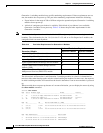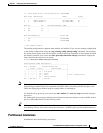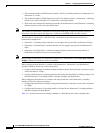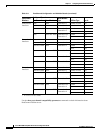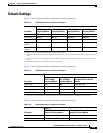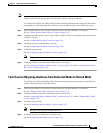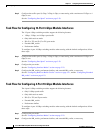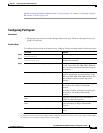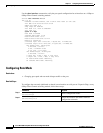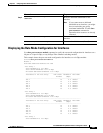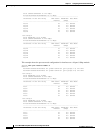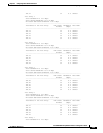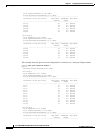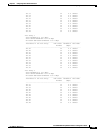
3-28
Cisco MDS 9000 Family NX-OS Interfaces Configuration Guide
OL-29284-01, Release 6.x
Chapter 3 Configuring Fibre Channel Interfaces
Configuring Fibre Channel Interfaces
Step 5 Configure the traffic speed (1 Gbps, 2 Gbps, 4 Gbps, or autosensing with a maximum of 2 Gbps or 4
Gbps) to use.
See the “Configuring Port Speed” section on page 3-29.
Task Flow for Configuring 12-Port 4-Gbps Module Interfaces
The 12-port 4-Gbps switching modules support the following features:
• 1-Gbps, 2-Gbps, and 4-Gbps speed traffic
• Only dedicated rate mode
• ISL (E or TE) and Fx (F or FL) port modes
• Extended BB_credits
• Performance buffers
To configure 4-port 10-Gbps switching modules when starting with the default configuration, follow
these steps:
Step 1 Configure the traffic speed (1 Gbps, 2 Gbps, 4 Gbps, or autosensing with a maximum of 2 Gbps or 4
Gbps) to use.
See the “Configuring Port Speed” section on page 3-29.
Step 2 Configure the port mode.
See the “Configuring Interface Modes” section on page 2-22.
Step 3 Configure the BB_credits, performance buffers, and extended BB_credits, as necessary.
See the “Configuring Buffer-to-Buffer Credits” section on page 4-21, and the “Configuring Extended
BB_credits” section on page 4-23.
Task Flow for Configuring 4-Port 10-Gbps Module Interfaces
The 4-port 10-Gbps switching modules support the following features:
• Only 10-Gbps speed traffic
• Only dedicated rate mode
• ISL (E or TE) and F port modes
• Extended BB_credits
• Performance buffers
To configure 4-port 10-Gbps switching modules when starting with the default configuration, follow
these steps:
Step 1 Configure the port mode.
See the “Configuring Interface Modes” section on page 2-22.
Step 2 Configure the BB_credits, performance buffers, and extended BB_credits, as necessary.



